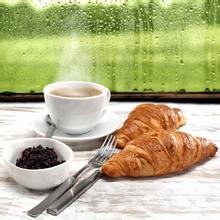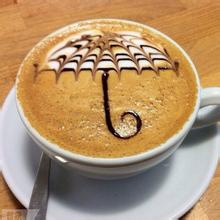Introduction to the characteristics of the fresh and bright Ethiopian boutique coffee flavor manor
Ethiopia's Yirgacheffe coffee is petite, but gentle and sweet. As the home of coffee, Ethiopia's millennia of growing and processing traditions have resulted in high-quality washed Arabica beans. Light roast with a unique lemon, floral and honey-like sweet aroma, soft fruit acid and citrus flavor, fresh and bright taste, yekashefi coffee trees were originally cultivated by European monks, later by farmers or cooperatives. Yegashefi is actually formed by surrounding coffee communities or cooperatives, which generally include: Hafusa, Hama, and Biloa.
These mountain villages are foggy, spring all year round, cool but not hot in summer, rain but not damp in winter, and they breed unique regional flavors of citrus and flowers. Coffee trees are grown mostly in farmers 'backyards or mixed with other crops on the farm.
Culture and characteristics: It has such a custom in this local area that no matter how poor the common people are, their homes must have a coffee pot and a charcoal stove. Why? Because coffee is something that local people think they must make every day, just like we smoke. People like us who smoke, basically for example, we can skip three meals a day, but we must smoke. They are also like this, they are one day I can not eat, but I must drink coffee, because they think this coffee is a tool and bridge between them and God, they will have a coffee pot and a charcoal stove in their poor home. For example, if a guest comes to the host's house as a guest, then if the host doesn't get up after you enter, then you can leave. Why? That means you're not welcome. If you go in after the male host is very very warm to you, that means he likes you very much. Then the hostess would dry fry some green beans and popcorn in the pan for snacks, and then you would sit and chat with the host like this, smoking or chatting. And what happens to the hostess? She's gonna start frying coffee beans right now, and it's gonna be really, really good. Then she immediately put the fried coffee beans in a tool similar to the one we use to mash garlic. She put it in there, mashed the coffee beans, and then put it in this charcoal stove and mixed it with water to start brewing the coffee. That is really, Ethiopian coffee can be called really, very fragrant Ethiopia is called "the birthplace of coffee." Why is it the birthplace of coffee? There is such a small story. In Ethiopia, there is a place called Kaffa. One day, there was a shepherd who raised sheep. Suddenly, one day, he found that the sheep was alive and jumping like crazy. Later, he carefully observed the sheep. After all, what did the sheep eat or smell? Then he found that the sheep ate a kind of fruit. Then he found that after eating the fruit, he felt that the sheep was very excited and cried non-stop every day. Later, he picked this fruit and distributed it to his church friends and relatives in this area to eat it. These people also felt refreshed after eating it, and then they felt all kinds of diseases disappeared. Then why? This was later called coffee. What do they call it when they eat it? Coffee beans.

Important Notice :
前街咖啡 FrontStreet Coffee has moved to new addredd:
FrontStreet Coffee Address: 315,Donghua East Road,GuangZhou
Tel:020 38364473
- Prev

Introduction to the characteristics of Jamaica Blue Mountain Coffee boutique Coffee Bean Flavor Manor
In the 150 years after 1692, Jamaica became a world-famous producer of sugar, rum and coffee. [4] in order to maintain a large number of plantations, the Royal Africa Company was established in England in 1672. After 1865, after another large-scale uprising, Britain declared Jamaica a colony under direct jurisdiction in 1866. At the end of the 19th century, the sugar industry in Jamaica gradually declined.
- Next

Introduction to Panamanian Rosa Coffee with strong floral flavor and taste characteristics
Panama is rich in forest resources and has many tree species, including valuable wood such as mahogany, cedar, teak, mahogany, and cedar. The forest area of eastern Dalian Province is the most widely distributed, but it has not been fully developed due to lack of market and for reasons such as national defense and protection of the natural ecological environment. [5] according to FAO estimates in 2010, the forest area of Panama is 4.29 million hectares, accounting for the land area.
Related
- Detailed explanation of Jadeite planting Land in Panamanian Jadeite Manor introduction to the grading system of Jadeite competitive bidding, Red bid, Green bid and Rose Summer
- Story of Coffee planting in Brenka region of Costa Rica Stonehenge Manor anaerobic heavy honey treatment of flavor mouth
- What's on the barrel of Blue Mountain Coffee beans?
- Can American coffee also pull flowers? How to use hot American style to pull out a good-looking pattern?
- Can you make a cold extract with coffee beans? What is the right proportion for cold-extracted coffee formula?
- Indonesian PWN Gold Mandrine Coffee Origin Features Flavor How to Chong? Mandolin coffee is American.
- A brief introduction to the flavor characteristics of Brazilian yellow bourbon coffee beans
- What is the effect of different water quality on the flavor of cold-extracted coffee? What kind of water is best for brewing coffee?
- Why do you think of Rose Summer whenever you mention Panamanian coffee?
- Introduction to the characteristics of authentic blue mountain coffee bean producing areas? What is the CIB Coffee Authority in Jamaica?

